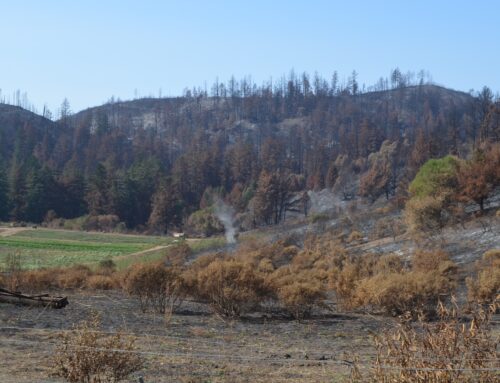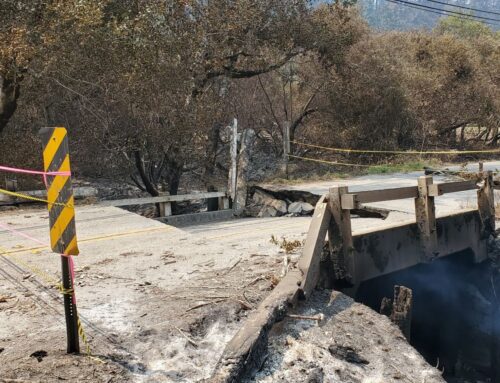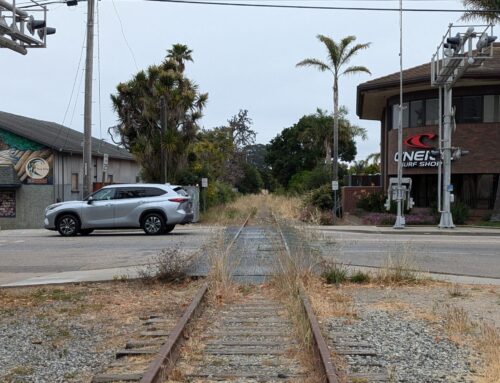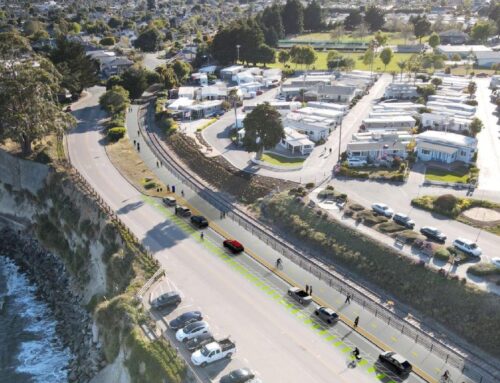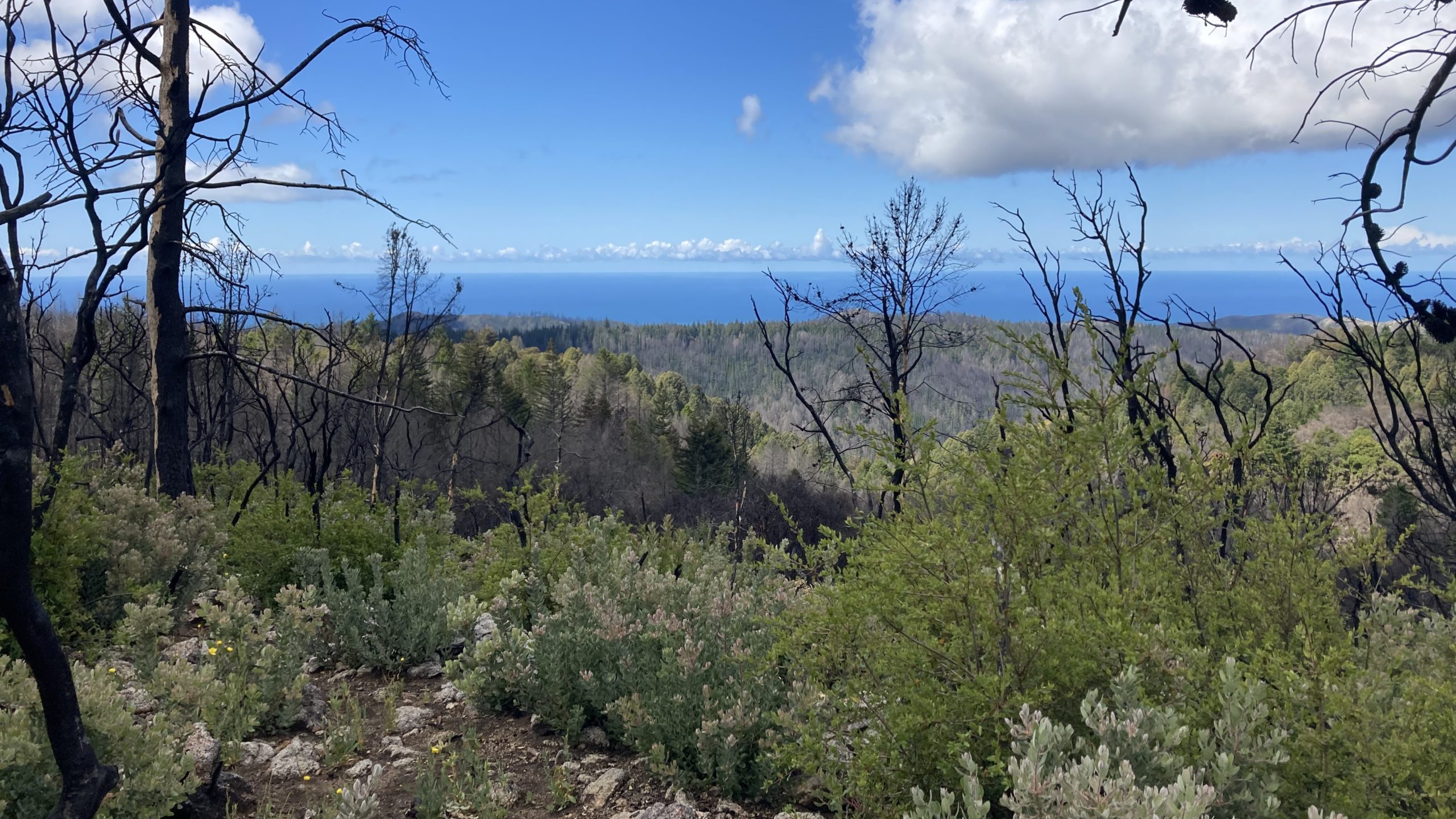
The Canyon Trail at San Vicente Redwoods overlooks the Mill Creek watershed and the Pacific Ocean. (Brian Homberger — Land Trust of Santa Cruz County)
DAVENPORT >> After 10 years of planning and land work, more than seven miles of new public trails are expected to open Dec. 3 in the San Vicente Redwoods off Empire Grade north of Santa Cruz.
The new trailhead is at 12001 Empire Grade, across from Crest Ranch Christmas tree farm. It’s about a 30-minute drive north of Downtown Santa Cruz, at the northeast edge of the nearly 9,000 acres of woodlands and animal habitat.
The trails for hiking, cycling and horseback riding represent the first phase of San Vicente Redwoods’ public opening. Four nonprofit groups have partnered to manage the land. The new trails are expected to eventually expand into a ‘ridgeline to shoreline’ system, connecting the initial phase of trails to the adjacent Cotoni-Coast Dairies National Monument.
- Prior to December opening, the Land Trust of Santa Cruz County will have volunteers on the property to help complete the trails 10 a.m. to 1 p.m. Sunday, Nov. 13.
- On Friday, Nov. 18 and Saturday, Nov. 19, the trails will be open to equestrians 10 a.m. to 2 p.m.. Registration is required for both events.
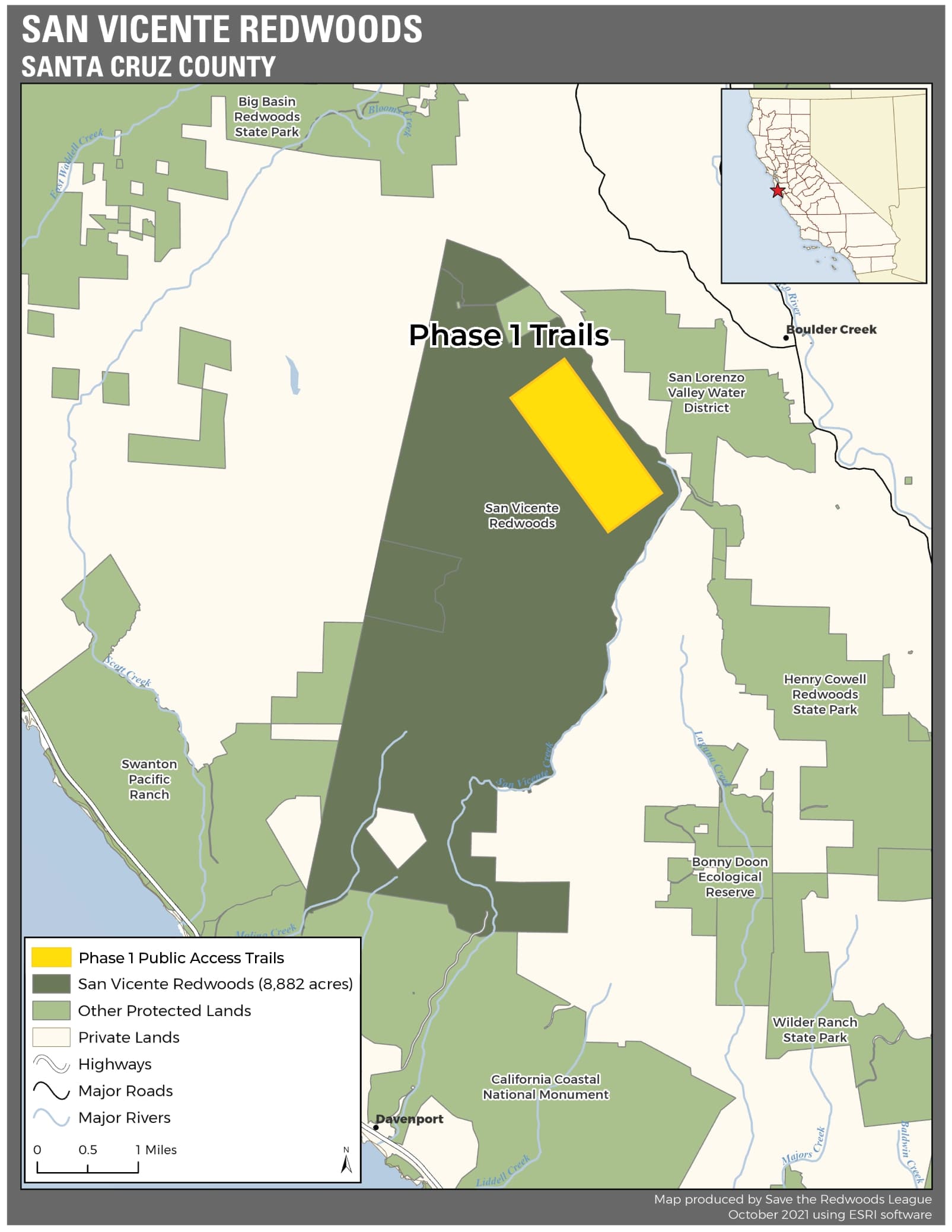
The yellow area shows the area of San Vicente Redwoods that is expected to open Dec. 3. (Save the Redwoods League)
“It’s really been a dream to see how much we can do together,” says Anthony Castaños, land stewardship manager for Save the Redwoods League. The league is one of the four agencies that own or manage the land.
- In 2011, Peninsula Open Space Trust and the Sempervirens Fund purchased the property from the Cemex building material company for $30 million. It was previously used for clear-cut harvesting and quarry mining during the past century.
- Save the Redwoods League oversees and enforces an easement over the land, protecting it from development and subdivision indefinitely. It also promotes conservation, restoration, and the sustainable, selective timber harvesting.
- The Land Trust of Santa Cruz County leads public access planning and has been driving the permitting and funding of the trail system.
Construction of trails was planned to begin in 2020 before the CZU Lightning Complex Fire struck in August. The blaze burned across the San Vicente property, blackening trees and incinerating other areas.
The fire “was really jarring to go through,” said Ian Rowbotham, senior land stewardship manager at Sempervirens Fund. “But how things have regrown has also been really empowering and interesting—to see areas that went from moonscapes to vibrant and green and lush again.” The fire has “come to define the property,” he said.
On the freshly paved driveway off Empire Grade, evidence of the fires’ aftermath is immediate. Hawks sit silently amid scorched tree stands with a vantage of the new 72-space parking lot and wheelchair-accessible restrooms. Beyond the trailhead, the path is bordered by piles of discarded charred logs. Beyond them, the understory rises from the ash in green shoots.
The path splits into five dirt trails with low inclines. The series of loops and out-and-backs intertwine among the scarred oak and redwood forests, transitioning into some open sunny stretches. Canyon Trail features several small creek crossings and a lookout over the entire Mill Creek Watershed, which supports endangered coho salmon and threatened steelhead trout.
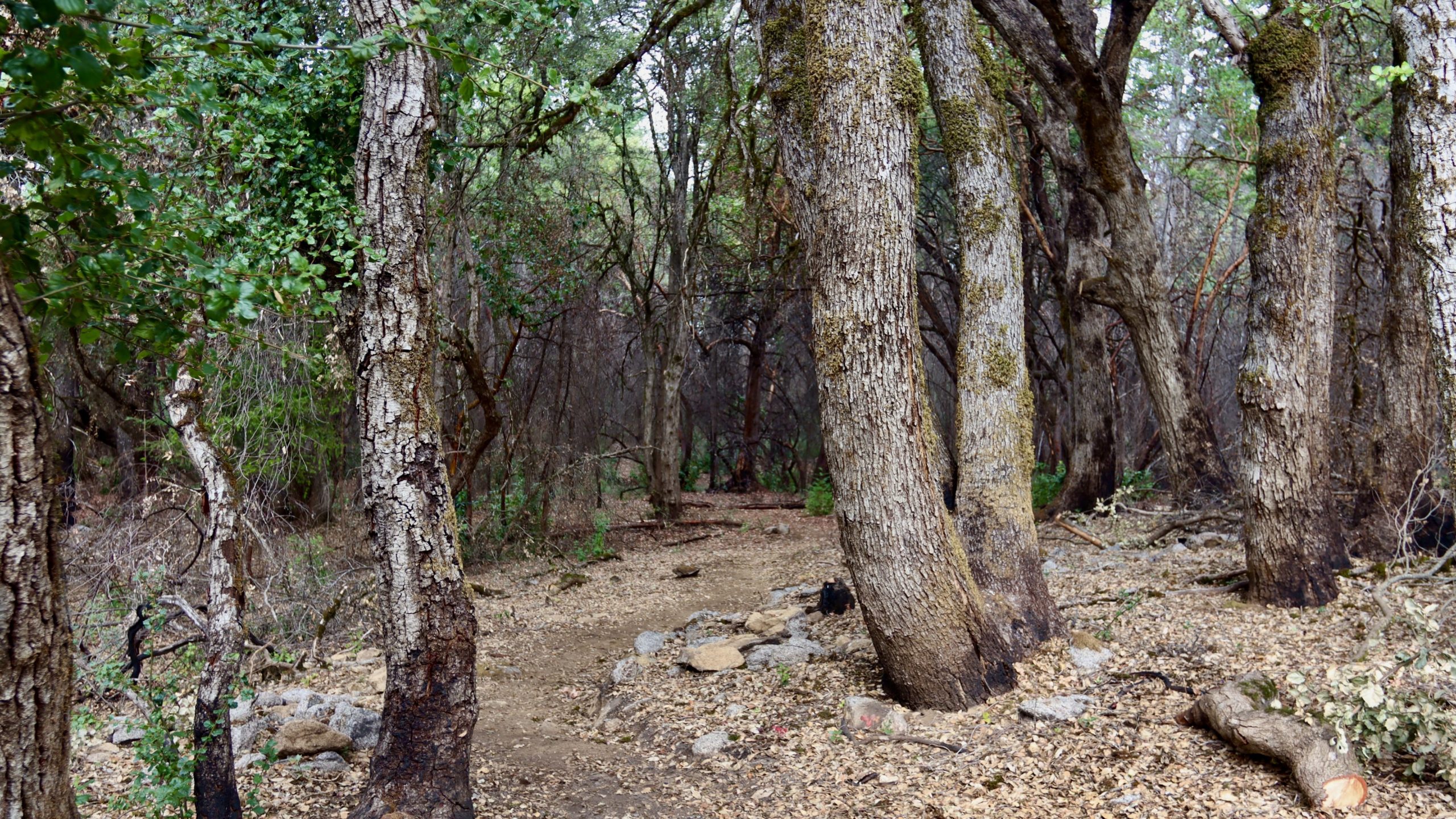
San Vicente Redwoods visitors can walk through oak woodlands on the Lizard Trail, as well as redwoods and grasslands that are recovering from the 2020 CZU Lightning Complex Fire. (Roxanne Hoorn — Santa Cruz Local)
Attractions and wildlife
Wildlife is another draw. Visitors are likely to see and hear the songbirds and raptors that are abundant at San Vicente. The marbled murrelet — an endangered seabird — and the golden eagle have been spotted on occasion, said Rowbotham, the Sempervirens land stewardship manager.
The endangered California red-legged frog and toxic California newt may also catch a hiker’s eye. As the wet season approaches, sightings of the area’s Pacific giant salamander — stretching up to 10 inches — becomes more likely, said Rowbotham.
“If someone’s really lucky, they might get barked at by one of those. They bark,” said Rowbotham.
This area serves as crucial, uninterrupted habitat for mountain lions and bobcats. The trails were built to avoid sensitive habitats of mountain lions and other wildlife. “There are very, very good reasons why the trails are where they are,” said Sarah Newkirk, executive director for the Land Trust of Santa Cruz County. Staying on the painstakingly placed trails, as well as taking only photos as souvenirs, is essential to protecting the many plants and animals that call the redwoods home.
Hours, rules and what to expect
San Vicente Redwoods’ initial opening in December includes 7.3 miles of trails. Hikers will share 4.1 miles with mountain bikers (electric bikes are not allowed), 2.3 miles with equestrians and less than one mile with leashed dogs. Panther Trail is an Outdoor Recreation Access Route, with a less than 5% grade, a wider trail width and no rocks or roots so that it is accessible for some outdoor mobility devices.
Visitors are asked to register online or at the trailhead kiosk near the parking lot on arrival.
Details at registration will also be used to keep visitors updated on trail closures, potential fire warnings and other events. Registration comes with a sticker designed by local artists. More than 1,800 people have registered, but the registrations don’t require a specific day to visit.
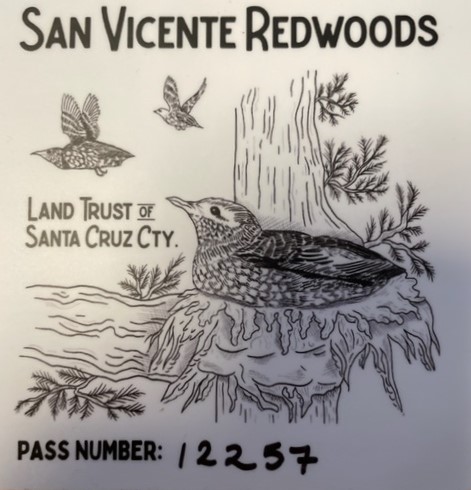
San Vicente Redwoods registered visitors receive passes like this one made by local artist Jordan Politis. (Land Trust of Santa Cruz County)
The Amah Mutsun Tribal Band also has led the naming of trails. Mȃ-rŭs (panther) and hai-min’ (lizard) are the first two trails that split from the trailhead. Indigenous people in the northern Monterey Bay area spoke the Awaswas language for many generations.
“It’s important to the Amah Mutsun to ensure the Awaswas ancestors are honored and never forgotten. The naming of trails in the Awaswas language in one way of doing this,” said tribal band chair, Valentin Lopez.
Interpretive panels and QR codes on the trails highlight local ecology and indigenous knowledge. “When the public walks on these lands, we ask them to think of the people who lived here for over 15,000 years and to take the time to learn their history,” Lopez said.
“Access managers” with the Land Trust of Santa Cruz County will be on site during the trail’s hours of operation 9 a.m. to 5 p.m. through April. The hours extend to 8 a.m. to 7 p.m. May through September.
“With the trails opening up, our responsibility becomes quite literally an everyday kind of thing,” says Sarah Newkirk, executive director for the Land Trust of Santa Cruz County.
The access managers can provide information about the trails and wildlife, as well as try to ensure that visitors are respectful of the rules to protect the land. The rules include:
- Visitors must stay on trails.
- Picnic only in designated areas.
- Dogs must be leashed and remain on designated dog trails only.
- Cyclists must ride in a safe manner on designated-use trails and yield to pedestrians and horses.
- All plants, animals and fungi are protected and may not be collected.
- No motor vehicles or electric bikes on trails.
- No camping, hunting or firearms.
- No open flames or smoking.
- No drones.
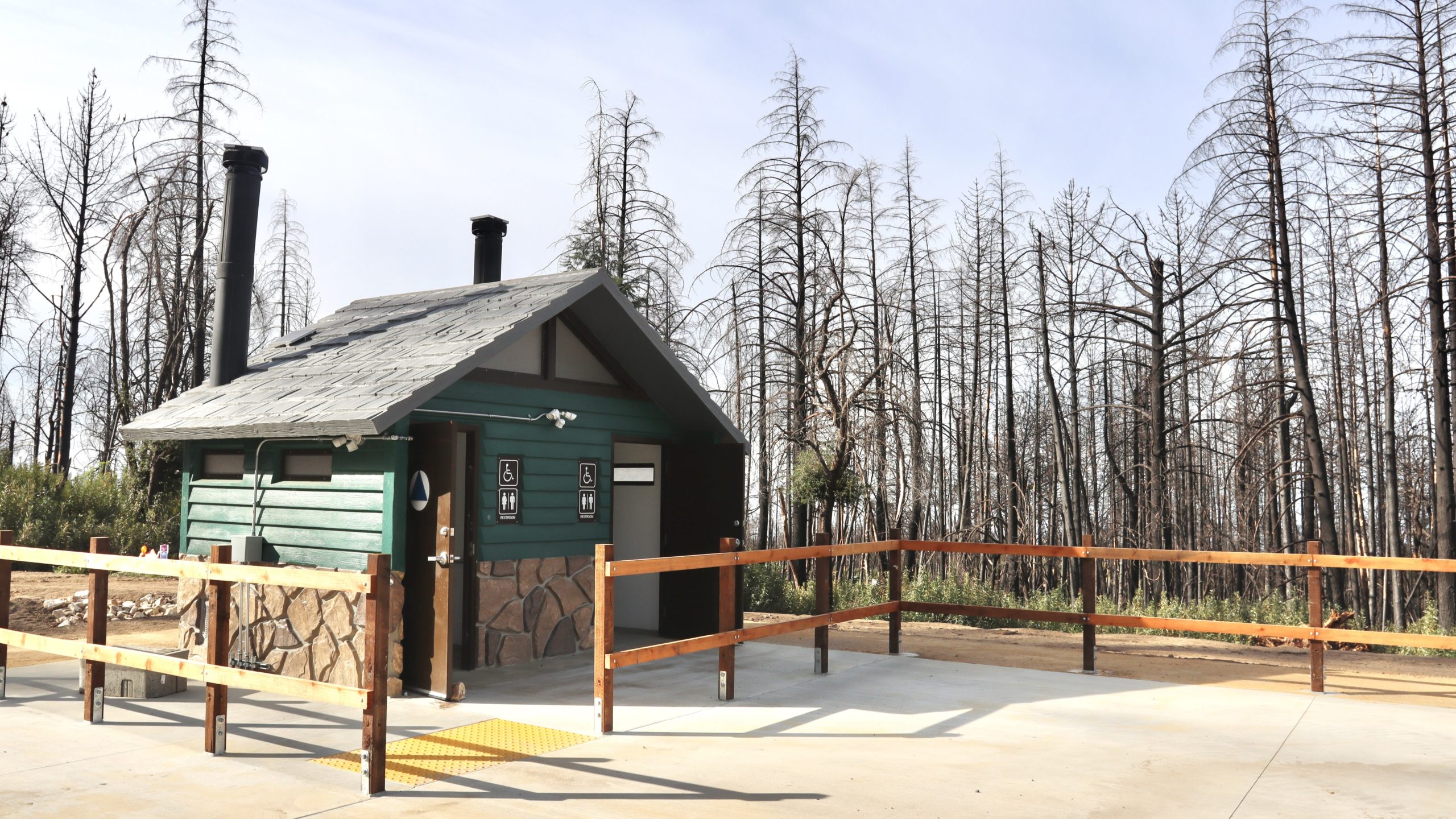
New restrooms are at the trailhead and parking lot of San Vicente Redwoods at 12001 Empire Grade. (Roxanne Hoorn — Santa Cruz Local)
Land stewardship
Dave Rubin, chair of the Rural Bonny Doon Association, said that some locals have had concerns about disruptions to mountain lions. They’ve also expressed concerns about mountain bikers on private properties, potential trash and rule enforcement.
To try to assuage some of those fears and partner with residents, leaders from the Land Trust of Santa Cruz County had several meetings with Rural Bonny Doon Association about the San Vicente property and trail project.
“The Land Trust of Santa Cruz County has been very agreeable and reassuring in addressing those concerns,” Rubin said recently.
Newkirk, executive director for the Land Trust, said of the Bonny Doon group: “We consider them one of our most important stakeholders.”
Fire precautions
Many locals worry about fires that could spark with public access. No open flames or smoking are allowed on the property. “Any kind of fires are scary to Bonny Doon,” said Rubin.
Fire management is a top concern and priority for managers of San Vicente too. Bonny Doon Fire Safe Council and Cal Fire continue to work with the agencies to restore the nine-mile fuel break that helped shield Bonny Doon and Davenport residents from the Lockheed wildfire in 2009, and helped slow the CZU Fire in 2020. The break is expected to serve as a major protection against future fires.
While the CZU Fire had devastating impacts, “We saw some rare species come back up that hadn’t been seen in the county for decades,” said Rowbotham. “It’s another indicator of just how adapted to fire this landscape is, and dependent on it in many ways.”
Rowbotham said that they hope to keep working toward bringing prescribed burns back to the land, warding off future catastrophes. The Amah Mutsun Tribal Band and Amah Mutsun Land Trust have been essential in this effort. They have led ceremonial burns on the land in recent years and plan to continue this effort, as well as accessing the land for ceremonies, gatherings, education, and research.
Questions or comments? Email [email protected]. Learn more about Santa Cruz Local and how we are funded. Santa Cruz Local is supported by members, major donors, sponsors and grants for the general support of our newsroom. Our news judgments are made independently and not on the basis of donor support.
Santa Cruz Local’s news is free. We believe that high-quality local news is crucial to democracy. We depend on locals like you to make a meaningful contribution so everyone can access our news. Learn about membership.
Roxanne Hoorn is a science journalist and storyteller. She is a master's degree candidate in science communications at UC Santa Cruz.


